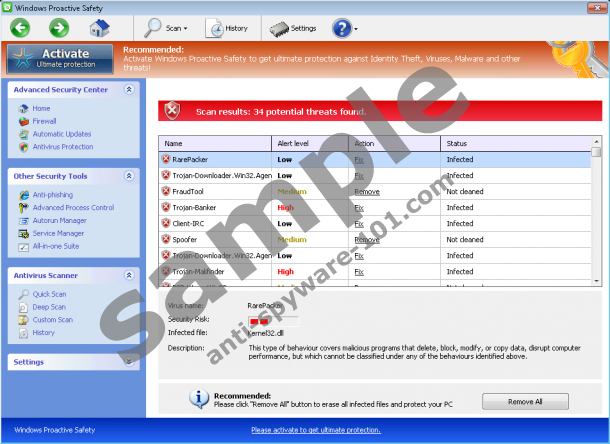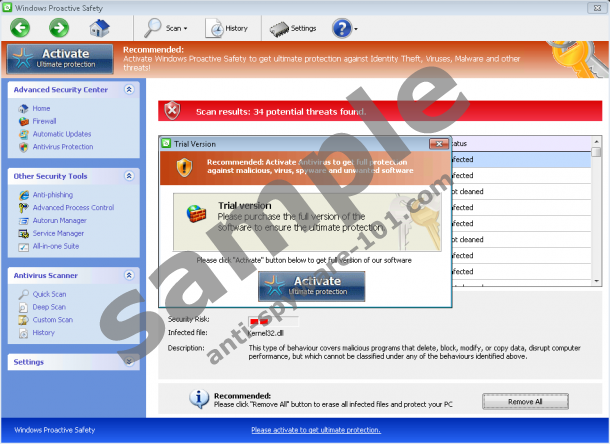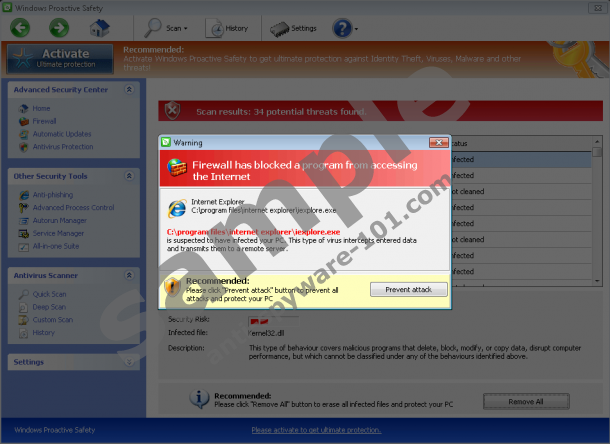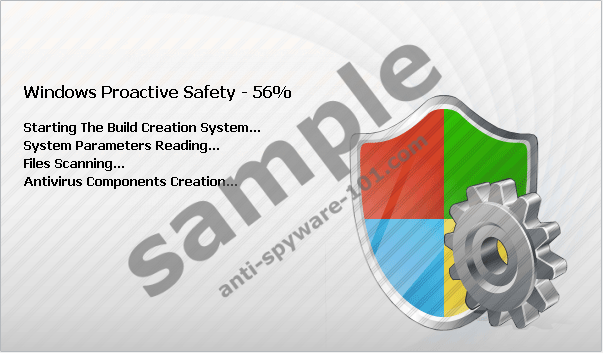What is Windows Proactive Safety?
Windows Proactive Safety comes from the same creators, who developed Windows Maintenance Guard and Windows Secure Web Patch rogue antispywares. These Rogue.VirusDoctor fake security applications can propagate in various different ways, and bundled downloads, spam email attachments and social engineering scams are amongst most utilized Windows security loopholes. Another way for the infection to travel is backdoors created by Trojan infections, in which case, you should scan your computer for malware, after you delete Windows Proactive Safety from the operating system.
Warning, this parasite will block your Internet connection. Click here for instructions how to renew your Internet access.
Schemers will ensure that the virus’s components are hidden from removal, after the infection is fully incorporated into your Windows. For this reason, your Internet connection will be blocked, administrative privileges to Task Manager, Registry Editor will be removed, and you will be disabled to run most of executable files. These irritating symptoms will create an illusion that your system is undergoing some illicit activity, then Windows Proactive Safety computer scanner will report numerous infections, and fictitious security alerts will flood unstoppably. All of these implementations are mean to guide you into purchasing rogue’s full version, which is completely useless, and you will not be able to use it for your system’s advantage. See a few examples of bogus virus’ notifications:
Torrent Alert
Recommended: Please use secure encrypted protocol for torrent links.
Torrent link detected!
Receiving this notification means that you have violated the copyright laws. Using Torrent for downloading movies and licensed software shall be prosecuted and you may be sued for cybercrime and breach of law under the SOPA legislation.
Please register your copy of the AV to activate anonymous data transfer and protocol through the torrent link.Error
Potential malware detected.
It is recommended to activate protection and perform a thorough system scan to remove the malware.Recommended:
Please click “Remove all” button to erase all infected files and protect your PC
These warnings and removal recommendations are completely fake and should not be trusted at any point, because those Windows users, who did fell for the scam, lost heir money and became vulnerable to identity theft dangers. So, remove Windows Proactive Safety from your operating Window system right away, and do it following one of the two removal options, which we present to you below.




Automatic Windows Proactive Safety Removal
Follow these removal instructions, if you do not have sufficient experience and knowledge linked to Windows system malware. Note that legal software should be installed in all computers, because only legal security tools could protect it efficiently.
1) For this option you will need to regain Internet connection and running of most executables, which is why you should apply a registration code: 0W000-000B0-00T00-E0020, which will remove all appeared dysfunctions, and will accelerate virus’ removal. With retrieved access to the Internet, download legal security software (e.g. SpyHunter) and let it delete Windows Proactive Safety.
2) If first option does not fit your system’s needs, you can download automatic removal tools onto a second computer. Then transfer installation files onto the damaged system with the assistance of removable devices.
100% FREE spyware scan and
tested removal of Windows Proactive Safety*
Manual Windows Proactive Safety Removal
Follow these removal instructions, if you have deleted malware successfully in the past and you know how to separate original and malignant components.
1) Equally to the automatic solution, you should start by applying a registration code, which would restore your access to Task Manager and Registry Editor tools. Then start by terminating these Task Manager processes:
2) Once the processes are terminated, remove malignant registry keys, which you can find in the Registry Editor, which you can launch by typing “regedit” in Windows’ “Run…” engine:
3) For the virus to be deleted successfully, you should not forget to get rid of all malware related files:





0 Comments.